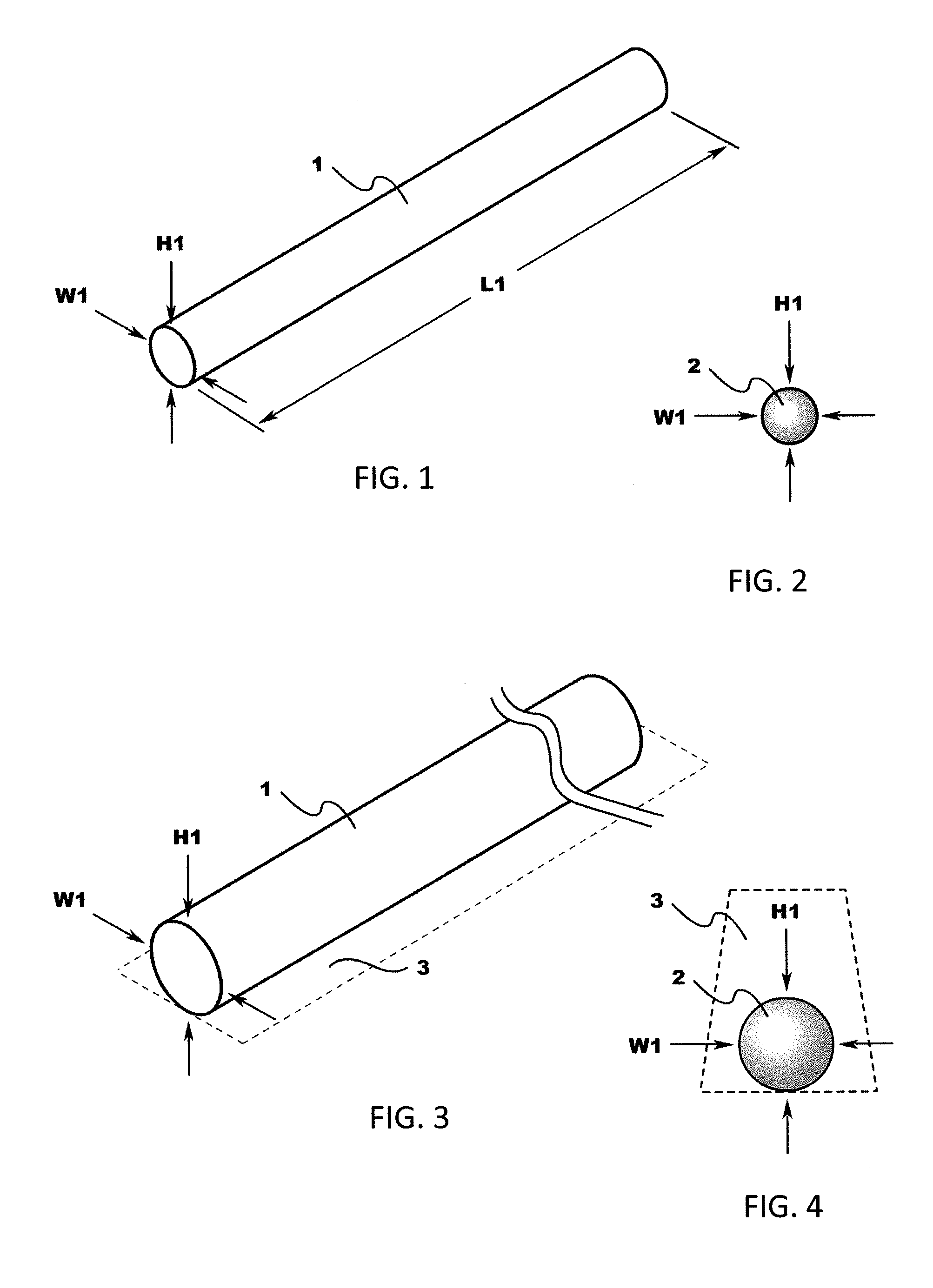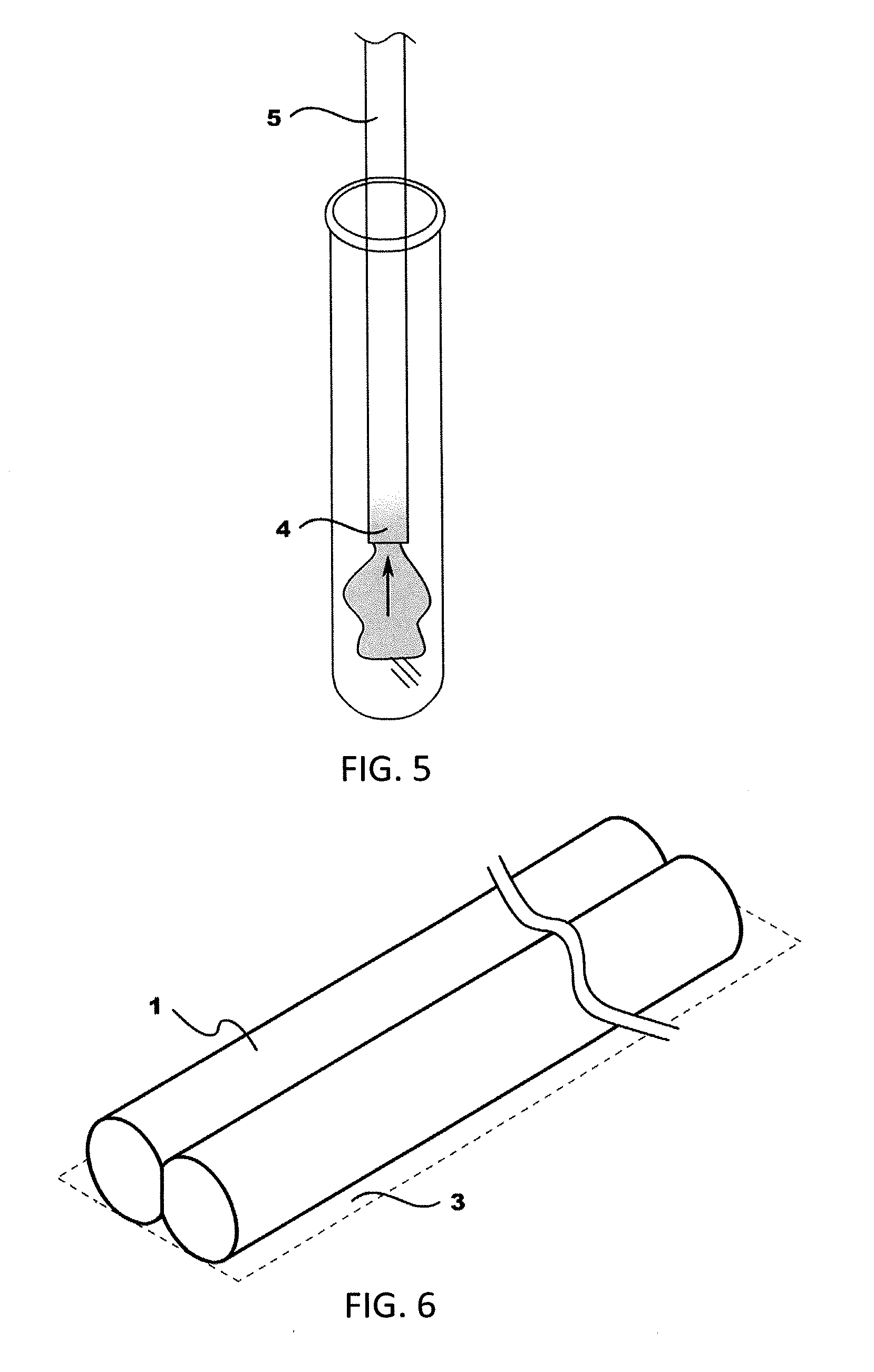Engineered leather and methods of manufacture thereof
a technology of engineered leather and manufacturing methods, applied in the field of engineered leather, can solve the problems of numerous differences in the thickness of the leather, and achieve the effect of increasing the height of the first stack
- Summary
- Abstract
- Description
- Claims
- Application Information
AI Technical Summary
Benefits of technology
Problems solved by technology
Method used
Image
Examples
example 1
Preparation of Support Substrate
[0199]To prepare a 2% agarose solution, 2 g of Ultrapure Low Melting Point (LMP) agarose was dissolved in 100 mL of ultrapure water / buffer solution (1:1, v / v). The buffer solution is optionally PBS (Dulbecco's phosphate buffered saline 1×) or HBSS (Hanks' balanced salt solution 1×). The agarose solution was placed in a beaker containing warm water (over 80° C.) and held on the hot plate until the agarose dissolves completely. The agarose solution remains liquid as long as the temperature is above 36° C. Below 36° C., a phase transition occurs, the viscosity increases, and finally the agarose forms a gel.
[0200]To prepare agarose support substrate, 10 mL of liquid 2% agarose (temperature>40° C.) was deposited in a 10 cm diameter Petri dish and evenly spread to form a uniform layer. Agarose was allowed for form a gel at 4° C. in a refrigerator.
example 2
Culture of Bovine Keratinocytes, Fibroblasts, and Epithelial Cells
[0201]Freshly isolated bovine keratinocytes, fibroblasts, and epithelial cells were grown in low glucose DMEM with 10% fetal bovine serum (Hyclone Laboratories, UT), 10% porcine serum (Invitrogen), L-ascorbic acid, copper sulfate, HEPES, L-proline, L-alanine, L-glycine, and Penicillin G (all aforementioned supplements were purchased from Sigma, St. Louis, Mo.). Cell lines were cultured on 0.5%>gelatin (porcine skin gelatin; Sigma) coated dishes (Techno Plastic Products, St. Louis, Mo.) and were maintained at 37° C. in a humidified atmosphere containing 5% CO2. The keratinocytes were subcultured up to passage 7 before being used to form multicellular bodies.
example 3
Preparation of Multicellular Spheroids and Cylinders
[0202]Cell cultures were washed twice with phosphate buffered saline solution (PBS, Invitrogen) and treated for 10 min with 0.1% Trypsin (Invitrogen) and centrifuged at 1500 RPM for 5 min. Cells were resuspended in 4 mL of cell-type specific medium and incubated in 10-mL tissue culture flasks (Bellco Glass, Vineland, N.J.) at 37° C. with 5% CO2 on gyratory shaker (New Brunswick Scientific, Edison, N.J.) for one hour, for adhesion recovery and centrifuged at 3500 RPM. The resulting pellets were transferred into capillary micropipettes of 300 μm (Sutter Instrument, CA) or 500 μm (Drummond Scientific Company, Broomall, Pa.) diameters and incubated at 37° C. with 5% CO2 for 15 min. For spherical multicellular bodies, extruded cylinders were cut into equal fragments that were let to round up overnight on a gyratory shaker. Depending on the diameter of the micropipettes, this procedure provided regular spheroids of defined size and cell ...
PUM
| Property | Measurement | Unit |
|---|---|---|
| length | aaaaa | aaaaa |
| thickness | aaaaa | aaaaa |
| diameter | aaaaa | aaaaa |
Abstract
Description
Claims
Application Information
 Login to View More
Login to View More - R&D
- Intellectual Property
- Life Sciences
- Materials
- Tech Scout
- Unparalleled Data Quality
- Higher Quality Content
- 60% Fewer Hallucinations
Browse by: Latest US Patents, China's latest patents, Technical Efficacy Thesaurus, Application Domain, Technology Topic, Popular Technical Reports.
© 2025 PatSnap. All rights reserved.Legal|Privacy policy|Modern Slavery Act Transparency Statement|Sitemap|About US| Contact US: help@patsnap.com



